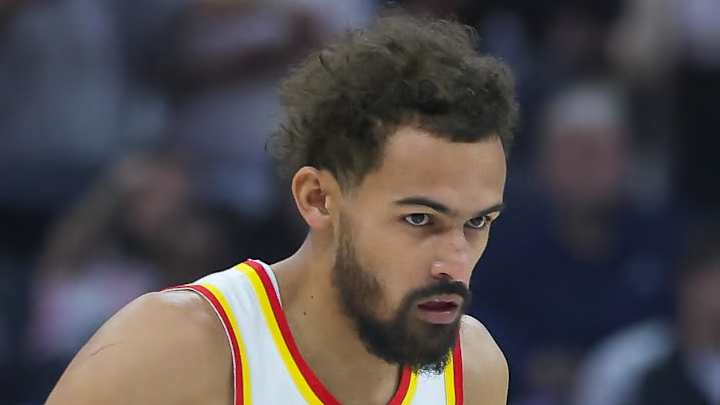For just the third time in Trae Young’s career, the Atlanta Hawks manufactured a win despite the three-time All-Star failing to score at least 10 points in a 109-108 victory over the Sacramento Kings.
He and the Hawks were 2-17 in those games before that, per Stathead.
Young finished with 7 points on seven attempts, bringing the Hawks to 7-15 in games where he attempts fewer than 10 shots. He was inefficient on the few he took, shooting 1-for-7 from the floor and going 0-for-2 from beyond the arc. But he came away with the most important stat of all: the win.
Still, Young’s final stat line – which included an NBA season-high 19 assists, 3 rebounds, and 2 steals – underscores a key point about the Hawks star.
Young’s production is often written off as superfluous; they look nice but do not impact wins.
That argument has gotten easier in recent seasons when his often heliocentric style of play resulted in a 60-67 record with him in the lineup over the past two seasons. But do the facts support the notion? He certainly was not seeking shots against the Kings with both teams shorthanded.
His seven attempts More importantly, what is the breaking point where Young’s offensive brilliance turns into a hindrance to the rest of his team?
There are a few numbers that make it a bit clearer how delicate the balance truly is.
Hawks have needed Trae Young to score by any means necessary
The last time the Hawks got a win when Young scored fewer than 10 points was in his rookie season (2018-19), and he has only failed to surpass the 10-point barrier 20 times in his six-plus year career.
The Hawks are just 183-214 when Young scores more than 10 points, and that number has not been much better when zeroing in on the last two seasons.
Atlanta is also 75-43 all-time when Young scores 30-plus points, so you want him to get there.
They are 149-140 when he scores at least 20 points, again showing how vital Young’s scoring has been to the Hawks’ success in his tenure. It is a point that is often ignored when discussing how frequently Young shoots the ball.
And there does not appear to be a sweet-spot range for Young’s attempts either. The Hawks have a losing record with Young taking 10-15 shots, 16-19 shots, and 20-plus shots.
In other words, whatever Young has to do to get the points, the Hawks have needed them.
That is as good of an argument as any for the Hawks star to keep pulling, even if his shot selection sometimes leaves plenty to be desired.
Of the five players with at least 7800 field goal attempts since Young entered the league, the Hawks star has the second-worst true shooting mark and the worst effective field goal percentage. He remains the one with the fewest All-Star appearances too.
More than lack of team success fueling Trae Young narrative?
Many will point to others on the list like Devin Booker, Jayson Tatum, and Luka Doncic all reaching the NBA Finals while Young has not.
However, there is not nearly the same vitriol over Donovan Mitchell, who has similar numbers in that span. And Young has had greater postseason success than Mitchell has to this point in their respective careers.
The Hawks beat the Milwaukee Bucks twice in the Eastern Conference Finals in 2020-21.
Mitchell – who spent most of his career under Hawks head coach Quin Snyder with the Utah Jazz– has not been past the second round, though his Cleveland Cavaliers are 15-0 this season
One of those Hawks wins did come after Young was injured stepping on a referee’s foot on the sideline. There is still proof that Young can lead a team deep into the postseason. And there is empirical evidence that suggests the Hawks need Young to get buckets by hook or crook.
Taking the good with the bad is likely always going to be par for the course.
The Hawks have a losing record when Young dishes out 10-plus assists too, but that never gets the same energy as his poor shooting nights do.
They are 117-98 when he hits the 43% threshold. There is an argument for a limited range of attempts when he hits that mark being the spot. At a certain point, however, it becomes impossible to control so many variables on a nightly basis, especially with the factors at play.
